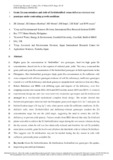JavaScript is disabled for your browser. Some features of this site may not work without it.
| dc.contributor.author | Goloran, J. B. | |
| dc.contributor.author | Johnson-Beebout, S. E. | |
| dc.contributor.author | Morete, M. J. | |
| dc.contributor.author | Impa, S. M. | |
| dc.contributor.author | Kirk, Guy J. D. | |
| dc.contributor.author | Wissuwa, M. | |
| dc.date.accessioned | 2019-04-18T15:27:12Z | |
| dc.date.available | 2019-04-18T15:27:12Z | |
| dc.date.issued | 2019-02-13 | |
| dc.identifier.citation | Goloran JB, Johnson-Beebout SE, Morete MJ, et al., (2019) Grain Zn concentrations and yield of Zn-biofortified versus Zn-efficient rice genotypes under contrasting growth conditions. Field Crops Research, Volume 234, March 2019, pp. 26-32 | en_UK |
| dc.identifier.issn | 378-4290 | |
| dc.identifier.uri | https://doi.org/10.1016/j.fcr.2019.01.011 | |
| dc.identifier.uri | http://dspace.lib.cranfield.ac.uk/handle/1826/14102 | |
| dc.description.abstract | Higher grain Zn concentration in ‘biofortified’ rice genotypes, bred for high grain Zn concentration, should not be at the expense of reduced grain yield. This study examined the grain yield and grain Zn concentration of Zn-biofortified genotypes in field experiments in the Philippines. Zinc-biofortified genotypes (high grain Zn concentration in Zn-sufficient soil) were compared with efficient genotypes (tolerant of soil Zn deficiency), inefficient genotypes (sensitive to soil Zn deficiency) and check genotypes (popular local varieties) at four sites (Bay, Bohol, Bukidnon and IRRI) with differing types and degrees of Zn deficiency, over five cropping seasons (wet season 2012, 2014 and 2015 and dry season 2013 and 2015). A common experimental design and plot size were used with treatments (genotypes and Zn fertilization) arranged in a two-factorial randomized complete block design. The results showed that biofortified genotypes achieved both the Philippine grain yield target (4.0 t ha−1) and grain Zn biofortification target (30 mg kg−1 for brown rice) only when grown under Zn-sufficient conditions. In Zn-deficient soils, most Zn-biofortified and deficiency-tolerant genotypes reached the Zn concentration target but not the yield target, suggesting the need to correct the soil Zn-deficiency to prevent yield penalty. Further, results from IRRI showed that only Zn-fertilized plants were able to achieve the Zn biofortification target during the wet season; whereas during the dry season, when the soil was less chemically-reduced and therefore the soil Zn probably more plant-available, grain Zn levels were all above the threshold, with or without Zn fertilizer. This suggests that Zn fertilization may not be needed during the dry season in soils with sufficient potentially plant-available Zn. | en_UK |
| dc.language.iso | en | en_UK |
| dc.publisher | Elsevier | en_UK |
| dc.rights | Attribution-NonCommercial-NoDerivatives 4.0 International | * |
| dc.rights.uri | http://creativecommons.org/licenses/by-nc-nd/4.0/ | * |
| dc.subject | Grain Zn biofortification | en_UK |
| dc.subject | Zn fertilization | en_UK |
| dc.subject | Biofortified rice genotypes | en_UK |
| dc.subject | Zn uptake | en_UK |
| dc.subject | Improved grain yield performance | en_UK |
| dc.title | Grain Zn concentrations and yield of Zn-biofortified versus Zn-efficient rice genotypes under contrasting growth conditions | en_UK |
| dc.type | Article | en_UK |
Files in this item
The following license files are associated with this item:
This item appears in the following Collection(s)
-
Staff publications (SWEE) [2805]

